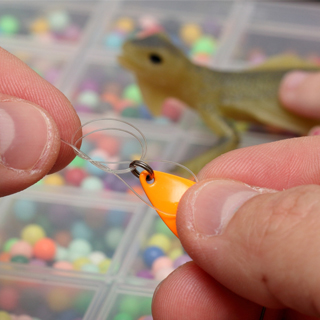How to Tie Basic Fishing Knots
Fishing knots come in many different types, including line to line knots, loop knots and more. The best knot will depend on your specific application, such as the type of fish you’re trying to catch, whether you’re using a swivel or sinker, and how heavy your equipment is. This blog post offers some handy information about basic fishing knots and how to tie them.

Basic Hook Knots
Learning to tie fishing hook knots is an essential skill for anglers. The success of your fishing will not only depend on how well you tie them, but also which type of knot you use. Some of the most basic and crucial knots include:
- Palomar Knot – Considered one of the most popular knots due to its strength and relative ease, this is best used to secure your hook with braided fishing line.
- Hangman’s Knot – Ideal for monofilament and terminal tackle, this versatile and dependable knot is suitable for various fishing situations.
- Surgeon’s Knot – One of the best and easiest fishing knots to use for joining lines of equal or unequal diameters.
- Improved Clinch Knot – Secures fishing line to hooks, lures and swivels.
- Arbor Knot – Used to secure a fishing line to the spool of a fishing reel, allowing you to pull it up by the line in the event your rod and reel go overboard.

Tying on a Swivel
There are several basic knots you can make to keep a swivel firmly attached to your fishing line. This includes a simple knot, an offshore swivel knot or an improved clinch knot, among others. Any of these options should prove effective and provide the desired result, so we recommend choosing the one you find easiest.

Sinker Knots
Sinkers are attached to fishing hooks and lures to increase the speed and depth at which they sink, allowing you to get the bait down far enough to where fish are located. Tying sinkers to fishing line can be done in one of two basic ways depending on whether you want to hold the bait on the bottom or let it move more freely in the current. Either tie the weight to the end of the line or some distance up the line to achieve the desired result respectively.
Knots for Heavier Equipment
For heavier fishing equipment, stronger knots are required to keep them in place. Certain knots are recommended that each have their own characteristics to suit different applications. Some appropriate knots for heavy equipment include the Trucker’s Hitch for roof rack tie downs, the Bowline for roof rack luggage, and the Reef for when additional length for security is required.
Shop at Aussie Disposals Today
Have a chat with the team at Aussie Disposals today for more tips on how to tie basic fishing knots. You can also learn more about the impressive selection of fishing equipment we have for sale, including fishing line, sinkers, hooks and more.














